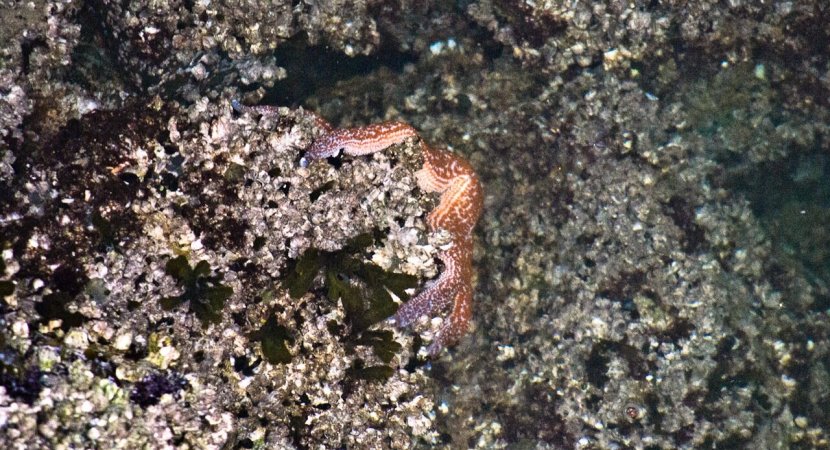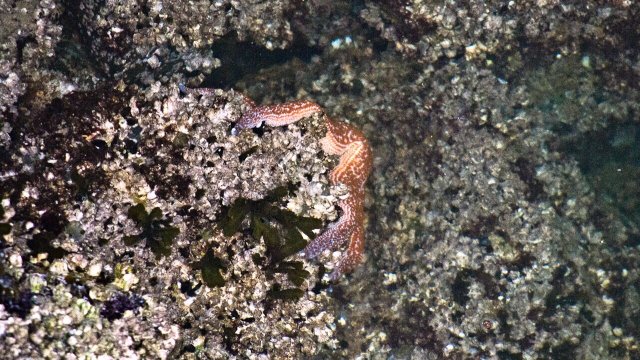“I talk to the trees,” sang Clint Eastwood 40-plus years ago in Paint Your Wagon. Now the trees, as they die in million-acre swaths, are talking back. So are a host of creatures; in the children’s story version, it’s like a Council of the Animals, once again needing to convince the humans that we’re animals, too, and not immune. It’s not a children’s story, though.
If war teaches us geography, climate change has been very instructive in ecological relationships. In the coastal Northwest, residents listen more carefully because in many ways their livelihoods depend upon the well-being of aquatic life. For decades, the icon of environmental efforts has been the salmon. But recently, the shellfish industry, estimated to have a $270-million annual economic impact, has been voicing alarm.
In the Seattle Times, Craig Welch reports on Washington State’s decision to lead the way in fighting ocean acidification, prompted by evidence from oyster harvests: “Since 2005, wild and hatchery-grown oysters have struggled to reproduce in Washington waters. Scientists this year finally showed that was directly linked to more corrosive waters that killed oyster larvae.”
The State issued a strategic response to ocean acidification on November 27, noting that it’s not a one-point problem:
For example, acidification along the outer coast of Washington and Puget Sound is strongly influenced by coastal upwelling while acidification in shallow estuaries, including those in Puget Sound, may be particularly influenced by inflows of fresh water (which is naturally lower in pH than seawater) carrying nutrients and organic carbon from human and natural sources. The added organic carbon, as well as nutrients that stimulate excessive algal growth, can make seawater more acidic when algae and other organic matter decompose.
One of the items on the to-do list is to track what’s doing the most harm, and find ways to mitigate the worst, first. “Overall, Washington’s seafood industry generates over 42,000 jobs in Washington and contributes at least $1.7 billion to gross state product through profits and employment at neighborhood seafood restaurants, distributors, and retailers,” says the report.
“Ocean acidification” refers to the corrosive affects of even a small change in pH–as with tree embolisms, ocean life has evolved within a particular range of pH, and there’s not much tolerance outside that. Lab experiments have consistently shown that calcium carbonite and aragonite (used to make shells) can be leached away by lower pHs, and a recent study of pteropods in the wild showed the expected shell dissolution.
Pteropods are not cocktail party conversation, usually. They are tiny amuse-bouches of the sea. Many fish, including salmon, eat them, though; if they were to die off, the impact would be significant. Research on their sensitivity to ocean acidification is of sudden interest. As the Washington State report notes, the acidification seen caused by today’s ocean upwelling represents surface ocean waters from the 1970s. As upwellings cycle to include the former surface waters of the ’80s, ’90s, and ’00s, the problem will get worse–in line with the increase in atmospheric CO2 over that period.
Meanwhile, the black guillemots of Cooper Island would like you to know (via researcher George Divoky) that they are now making a 600-to-1,000-mile round-trip to get to Arctic ice — and their arms are tired. Divoky has been researching the black guillemot population on Cooper Island since the 1970s–we interviewed him about the effects of climate change there back in 2009. That’s why he’s able to put together this handy graphic showing the ice’s retreat over that interval.
Arctic ice melt doesn’t affect sea level rise (“Now 60 percent faster than expected!“) since the volume of water displaced by floating ice is equal to the volume it takes up as melted water, but the ice’s retreat has a variety of impacts, not the least of which is more polar bears on Cooper Island. And its absence disrupts an ecological network that assumes the presence of ice. Once again, tiny but numerous food sources are put in jeopardy.
“I am always surprised to return to find that the media is again discussing the ice loss primarily as a physical phenomenon, similar to what is being reported in the decrease of glaciers, rather than one of unprecedented biological loss and degradation of a unique cryopelagic marine ecosystem,” writes Divoky on his blog. (That said, do go see Chasing Ice at the Egyptian Theater.) He’s thinking of the way people have rallied to save the rainforests because they are rainforests. The tendency with frozen wastes is to think them uninhabited.
But another lesson, one that is being repeated with increasing frequency, is that climate change is fond of the gut punch, through bottom-up food-chain disruption. Let’s put it in Pogo-speak: “We have met the charismatic megafauna, and he is us.”



““I talk to the trees,” sang Clint Eastwood 40-plus years ago in Paint Your Wagon.”
Thank you for missing an “empty chair” reference opportunity.
Also, any statements from these peeps you speak of and the American dude in Canada who recently tried to affect the acidification of the waters off Vancouver Island?
Oh, that guy! I should have tried to work in the DIY angle. I’d forgotten about that.